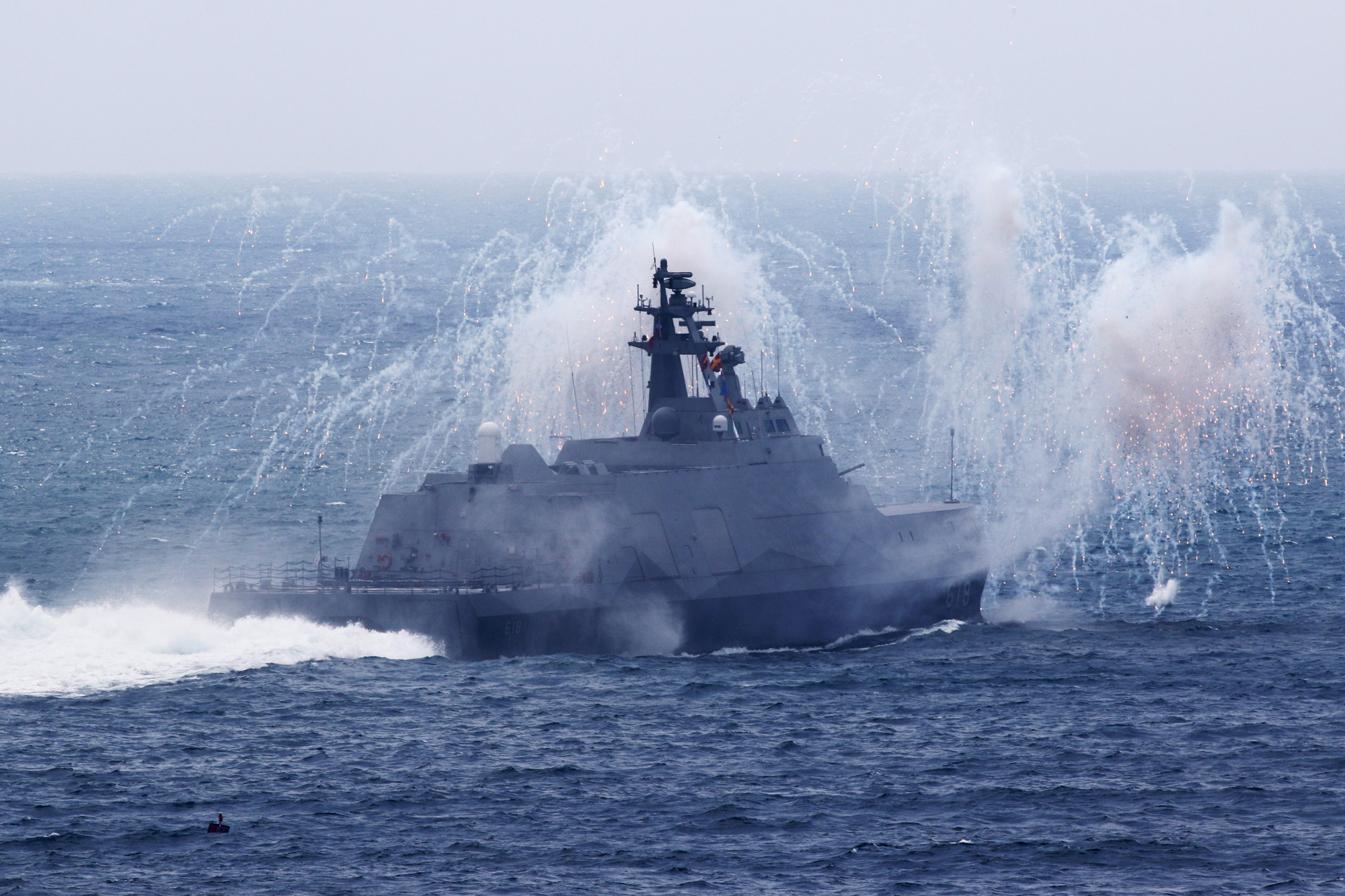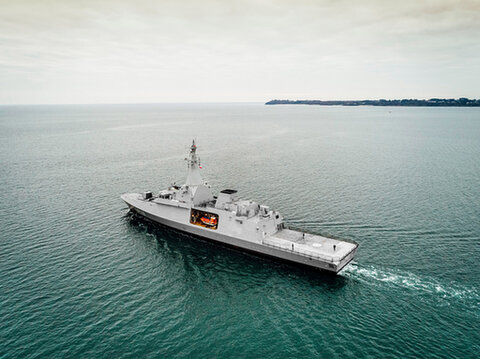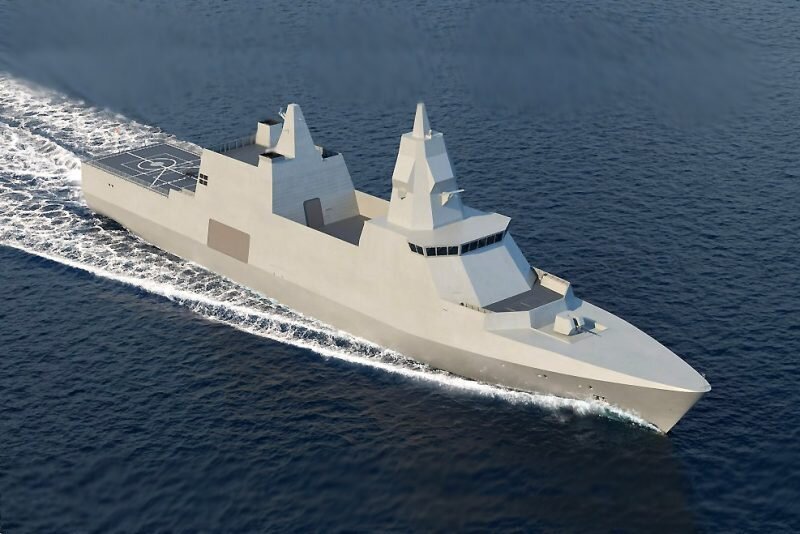Cover Story
Universal appeal: OPVs and corvettes proliferate
In a booming naval surface warship market, the OPV and corvette sector, particularly in the Asia-Pacific, offers increasing opportunity. Gordon Arthur reports.

Taiwan has a current corvette programme based on the Tuo Chiang class of wave-piercing catamarans. So far, three have been completed and another three launched. Credit: Gordon Arthur.
The definition of naval ship classes can be notoriously arbitrary – for instance, two new corvettes for the Philippine Navy will be larger than its frigates, while Australia’s Hunter-class frigates will be heavier than its destroyers. Nonetheless, corvettes are typically better armed and heavier than offshore patrol vessels (OPV).
Richard Hedström, head of product management business unit Surface Ships at Saab, noted: “The corvette, due to its size and endurance, is more suitable in the littorals and in coastal operations; that is its natural habitat. But in other aspects, such as firepower and sensor capabilities, it’s just as effective and capable as a frigate.
“The great advantage with corvettes is that they give a task force commander the flexibility and freedom of action to operate in areas offshore, as well as in the protected and narrow waters of an archipelago.”
A BAE Systems spokesperson added their thoughts too, stating: “In terms of capital acquisition cost, an OPV is typically one third the price of a light frigate-sized ship, or alternatively one could have three OPVs for the price of a single light frigate.”
An OPV’s through-life cost will also be cheaper, plus it has a smaller crew. Other advantages are versatility, a smaller size which opens up a greater range of port infrastructure, and their ease of build. The BAE Systems spokesperson added: “There are not really any disadvantages of OPV-sized ships. Whilst they may not carry the combat capability of much larger ships, we would argue that is not their primary purpose.”
What of the future prospects of corvettes? Hedström assessed: “Corvettes never go out of fashion due to their high manoeuvrability, speed, firepower, and shallower draught. The corvette offers a crucial capability if you successfully want to handle the military problems that an inland sea or littoral waters imply.”
Saab’s executive added: “Seabed warfare has established as a real threat for especially coastal states, even in peace. The future navy of any nation needs to handle all forms of threats on the spectrum, from full-scale war to peacetime operations such as surveillance of seabed infrastructure.
“Most likely, unmanned systems will support any type of naval operation. Many nations have identified this, and our Singaporean customer is one of them”, referring to Singapore’s Multi-Role Combat Vessels (MRCV) that will act as motherships for unmanned systems, besides performing more conventional capabilities such as surface warfare.
Saab worked with Odense Maritime Technology on the MRCV’s basic design, while ST Engineering Marine will deliver six vessels from 2028 onwards to replace six Victory-class corvettes. Furthermore, Singapore also announced in November 2023 that it had ordered four OPVs from Germany's Fassmer.
Based on a 1,890-tonne German Federal Police design, the OPVs will replace four 525-tonne Sentinel-class vessels. Highly manoeuvrable for Singapore’s congested waters, they will be fitted with both lethal and nonlethal weapons and delivered beginning in 2028.
Singapore is just one nation modernising its OPV and corvette fleets. According to sector forecasts from GlobalData, the naval vessel and surface combatant market was worth $44.2bn in 2023 and will grow at a compound annual growth rate of 4.1% to reach $65.8bn by 2033. More than 60% of the market’s value will focus on frigates, destroyers, and auxiliary vessels.
Asia-Pacific will trail only North America, and the region is expected to account for a 31.6% revenue share of the global naval vessel and surface combatant market from 2023-33. Ongoing naval modernisation initiatives to replace ageing vessels are expected to drive this regional market growth over the forecast period. Furthermore, GlobalData forecasts state that Asia-Pacific market growth can be attributed to geopolitical tensions and maritime territorial disputes among countries such as China, India, Japan, South Korea, and Taiwan.
Naval programme ambitions: industrial support
French naval prime Naval Group has been successful with corvette designs, particularly its Gowind design. A total of four 2,800-tonne corvettes were delivered to Egypt from 2017-22, three of which were built in Alexandria. Additionally, the first of two for the UAE was commissioned in November 2023.
However, Malaysia represents a cautionary tale of the risks entailed in industrial cooperation. Boustead Naval Shipyard attempted to build six Gowind 2500 corvettes in Malaysia, but the programme has been fraught with delays. Eight years after construction of the first vessel began, it is still nowhere near completion, and the Malaysian Government has already cancelled the sixth vessel.
A spokesperson from Naval Group discussed the importance of technology transfer. “All over the world, offsets, advanced technologies, indigenisation, and local content are requirements in defence procurement. Naval Group sees these requirements as an opportunity to expand its footprint with the constant aim of win-win cooperation.
Technology transfer is a challenge for the recipient shipyard, as it must implement major changes to acquire new skills and increase its industrial capacity
Naval Group spokesperson
“Technology transfer is a challenge for the recipient shipyard, as it must implement major changes to acquire new skills and increase its industrial capacity. The example of Malaysia demonstrates that, whatever the difficulties encountered on these complex programmes, Naval Group remains at the side of its customers and partners over the long term to provide the necessary assistance right through to completion.”
BAE Systems is another company that recognises the importance of technology transfer. Many developing countries feel able to build ships of OPV size, and shipbuilders must be ready to support such ambitions or risk losing out altogether. BAE Systems supported Thailand to build two 90.5m-long Krabi-class OPVs, for instance.
The OEM explained: “We have seen the number of OPV shipbuilding competitors increase, and clearly the abundance of supply options makes winning future export work for all shipbuilders more challenging. That is one of the reasons BAE Systems has adopted a licenced-design model for export in some regions. Licenced design of OPVs can be a win-win outcome for BAE Systems and its customers… shipbuilding industry gets the work and ability to further grow naval shipbuilding skills, whilst customer navies are able to draw on their own industrial base for through-life vessel support such as for repair and upgrade.”

Constructed by Naval Group in France, Bani Yas, a Gowind 2500 corvette of the UAE Navy, was commissioned on 29 November 2023. Credit: Naval Group
These Thai OPVs are based on the Royal Navy’s River class, of which two have been operating in the Indo-Pacific since September 2021. HMS Spey and Tamar have visited more than two dozen countries and cumulatively travelled in excess of 120,000nm. At time of writing, one OPV had ranged as far as Pitcairn Island, halfway between New Zealand and Peru. The OPVs’ ongoing deployment is testament to their remarkable persistence.
BAE Systems told Global Defence Technology: “These deployments demonstrate the inherent reliability of these vessels, and the confidence the Royal Navy has in their ability to be supported using a combination of UK at-reach support delivered through regional partner facilities.”
Major global OPV/corvette programmes
Illustrating their enduring popularity, significant OPV and corvette build programmes are under way around the world. Naval Group has been marketing OPVs ranging from 45m to 87m since 2013, via a joint venture with Kership. It supplied four OPV 87s to the Argentine Navy from 2019-22, with a spokesperson saying: “Better armed, more motorised, equipped with an active stabilisation system and a bow thruster, they are also adapted for navigation in the cold waters of Antarctica (ice-proven).”
Naval Group is also readying a third OPV 58S for Senegal. These are heavily armed OPVs with 76mm and 20mm guns, Marte Mk2 anti-ship missiles and SIMBAD-RC short-range air defence launchers.
The French shipbuilder commented: “Navies continue to show a keen interest in corvettes and OPVs, as demonstrated by orders placed in recent years for OPVs by Argentina, Senegal and France... These products are widely used around the world, thanks to their high-seas capabilities and dual-use capability (military and public service missions).”
The corvette, due to its size and endurance, is more suitable in the littorals and in coastal operations; that is its natural habitat.
Richard Hedström, head of product management business unit Surface Ships at Saab
France is buying ten multirole 2,400-tonne OPVs from a consortium of CMN, Piriou and Socarenam, with the first expected in 2026. Fitted with Thales Bluewatcher hull-mounted sonars and N550 surveillance radars under this Patrouilleurs Hauturiers programme, seven vessels will go to the French Navy. Operating in French littoral waters, they will interestingly feature a counter-UAS suite – presumed to be Cerbair’s Hydra 300 – to protect against small drones. As recent events in the Red Sea demonstrate, unmanned aircraft can pose a serious risk to shipping.
A Portuguese Navy project to field six Batch 3 Viana do Castelo-class OPVs took a step forward with a €299.7m contract awarded to West Sea - Estaleiros Navais in December 2023. The 83m vessels will be delivered from 2027-30, complementing four existing vessels of the class. Elsewhere, the Royal Canadian Navy is receiving six 103m-long Arctic and Offshore Patrol vessels. Built by Irving Shipbuilding, these lightly armed, ice capable OPVs will improve Canada’s presence in the Arctic region. The Canadian Coast Guard will also receive two vessels.

Australia is rethinking its Arafura-class OPV programme, with Luerssen Australia contracted to build a dozen vessels back in 2017. Credit: NVL
The European Patrol Corvette (EPC) programme is slowly gathering momentum since its inception in 2019. Its principal partners are France, Italy and Spain, which encompasses a consortium from Naval Group, Fincantieri and Navantia. Work began last October to design a 3,000-tonne EPC that can be tailored to individual customer needs. This effort is important for European defence cooperation, which is seeing increased naval shipbuilding competition from regions such as Asia.
Asia-Pacific developments
Given their versatility and cost-effectiveness, various OPV and corvette programmes are active in the Asia-Pacific region. China, for example, constructed a staggering 72 Type 056/056A corvettes from 2012-21. Meanwhile, Hyundai Heavy Industries is currently constructing two HDC-3100 corvettes and six HDP-2200+ OPVs for the Philippine Navy, as Manila seeks to wield more clout in the South China Sea in the face of ongoing Chinese aggression.
Elsewhere, Australia represents an interesting case where evolving security threats are causing a rethink in naval acquisitions, although it is probably more realistic to say that Australian defence planners failed to perceive the rising maritime threat from China. Luerssen Australia was contracted in 2017 to build a dozen 1,640-tonne Arafura-class OPVs, these being relatively under-armed and relatively slow vessels with a top speed of just 20kt.
However, last year’s Defence Strategic Review stated: “Enhancing navy’s capability in long-range strike (maritime and land), air defence and anti-submarine warfare requires the acquisition of a contemporary optimal mix of Tier 1 and Tier 2 surface combatants, consistent with a strategy of a larger number of smaller surface vessels.”
OPVs are often seen as the ideal cost-effective ship type to provide essential maritime security against illegal and illicit activity.
BAE Systems spokesperson.
This has fuelled the idea that Australia may now seek corvettes that are more capable than the Arafura OPVs. Under current plans, the Royal Australian Navy (RAN) will only have twelve surface combatants (three destroyers and nine frigates), so it definitely needs more hulls, greater persistence, missile capacity and flexibility with its fleet. More clarity is expected when Australia releases a long-awaited naval review early in 2024.
In the meantime, Luerssen has positioned its C90 corvette to fit Australia’s revised requirements. Displacing 2,300 tonnes, and 10m longer than the Arafura, this platform is more capable: it can carry up to 16 VLS cells, a 76mm gun, 35mm cannon, eight Naval Strike Missiles, twin torpedo launchers, CEA radar and it has a stern hangar and flight deck.
Luerssen pointed out that C90 corvettes could be in the water by 2028, two years quicker than any other alternative choice, by pivoting the existing OPV production line. Subsequent vessels could be delivered every ten months.

A computer-generated image of the Singapore navy’s new Multi-Role Combat Vessel (MRCV), designed by Saab and OMT. Credit: Singapore MINDEF
The shipbuilder emphasised that this would save the government millions of dollars too, an important factor given that money will be in short supply as the RAN eyes a fleet of very expensive SSNs.
Given the use case and cost benefits for the use of OPVs and corvettes, from utility, applications, and potential local industrial particpation, the future of such naval vessels appears assured through to the medium-term, a sentiment echoed by industry.
“As defence budgets around the world come under increasing pressure, OPVs are often seen as the ideal cost-effective ship type to provide essential maritime security against illegal and illicit activity. Also, with a broad range of users across navy, coast guard and border security agencies, OPVs have universal appeal,” concluded the BAE Systems spokesperson.
$345m: Lynas Rare Earth's planned investment into Mount Weld.

Caption: The US Pentagon is seeking to reduce carbon emissions through a range of programmes, but will it go far enough? Credit: US DoD
Australia could be one of the main beneficiaries of this dramatic increase in demand, where private companies and local governments alike are eager to expand the country’s nascent rare earths production. In 2021, Australia produced the fourth-most rare earths in the world. It’s total annual production of 19,958 tonnes remains significantly less than the mammoth 152,407 tonnes produced by China, but a dramatic improvement over the 1,995 tonnes produced domestically in 2011.
The dominance of China in the rare earths space has also encouraged other countries, notably the US, to look further afield for rare earth deposits to diversify their supply of the increasingly vital minerals. With the US eager to ringfence rare earth production within its allies as part of the Inflation Reduction Act, including potentially allowing the Department of Defense to invest in Australian rare earths, there could be an unexpected windfall for Australian rare earths producers.
Total annual production


Phillip Day. Credit: Scotgold Resources